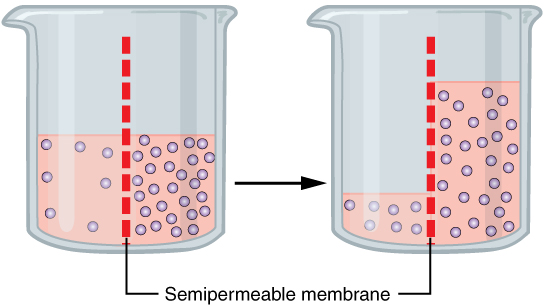AP Biology 2.9: Mechanisms of Transport
The past couple of lessons have all focused on different types of transport across the cell membrane. This is an essential process of all cells and necessary for their functions, as well as for life as a whole. Topic 2.9 serves as a review of passive transport, active transport, and osmosis.
Vocab List
- Selective permeability
- Concentration gradient
- Dynamic equilibrium
- Passive transport
- Simple diffusion
- Facilitated diffusion
- Channel proteins
- Carrier proteins
- Aquaporins
- Active transport
- Endocytosis
- Phagocytosis
- Pinocytosis
- Receptor-mediated endocytosis
- Exocytosis
- Endocytosis
- Osmosis
- Isotonic
- Hypertonic
- Hypotonic
- Water potential
Written Explanation
The cell membrane, consisting of a phospholipid bilayer, with both hydrophilic heads and hydrophobic tails, is selectively permeable, meaning that only certain substances can pass freely through it.
Passive transport:
Passive transport is the movement of solutes (molecules) across this selectively permeable membrane with the concentration gradient, namely from the side of the membrane that contains a lot of the substance to the side that contains less, until dynamic equilibrium is reached. This means that while the solute could still move across the membrane, there will be an overall equal amount of it on either side of the membrane. Passive transport also does not require the input of any additional cellular energy.
Types of passive transport include simple diffusion, which is the passage of small and uncharged molecules through the gaps between phospholipids in the membrane, and facilitated diffusion, which uses membrane proteins in order to move large and polar molecules across the membrane. There are two kinds of membrane proteins: channel proteins, which act as a tunnel for substances (usually ions), and carrier proteins, which take specific amounts of specific proteins and move them across the membrane. Lastly, aquaporins are the channel proteins used for the transport of water in osmosis.
Active transport:
Meanwhile, when solutes move against the concentration gradient across the cell membrane, this process is known as active transport, and it requires the addition of extra cellular energy. Membrane proteins are used for active transport of small amounts of molecules.
For large amounts of solutes, endocytosis is used, which takes in resources via folds in the membrane. Similarly, the substances are expelled through exocytosis. There are three main types of endocytosis:
- Phagocytosis, which takes in large molecules as the membrane encapsulates the molecules and forms a vesicle.
- Pinocytosis, which takes in primarily water by creating an inward fold in the cell membrane.
- Receptor-mediated endocytosis, which only functions when the receptor is activated by the right signaling molecule.
Osmosis review:
Osmosis is the diffusion of water across the plasma membrane through aquaporins, and it occurs as the amount of water always tries to be equally proportional to the amount of solute on either side of the cell. There are three different kinds of solutions which describe this movement.
- Isotonic solution - there is an equal concentration of solute on either side of the membrane, water is moving in dynamic equilibrium.
- Hypertonic solution - there is a higher concentration of solute outside of the cell so water moves out of the cell, causing it to shrink (if it's an animal cell, plant cells have a cell wall which maintains their shape).
- Hypotonic solution - there is a higher concentration of solute inside the cell, so water moves into the cell, causing it to burst (again, only with animal cells).
Lastly, it is important to remember that water will always move from a high water potential (where there is less solute) to a low water potential (where there is more solute), or in other words, from a low solute concentration to a high solute concentration. But remember, this is the opposite for diffusion!
 Diagram of osmosis
Diagram of osmosis